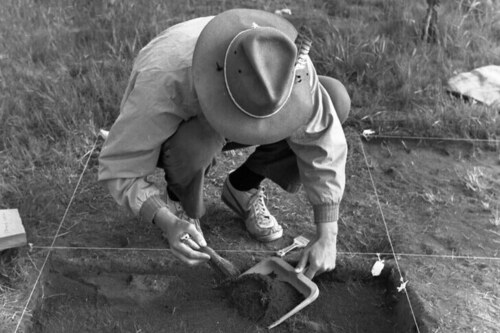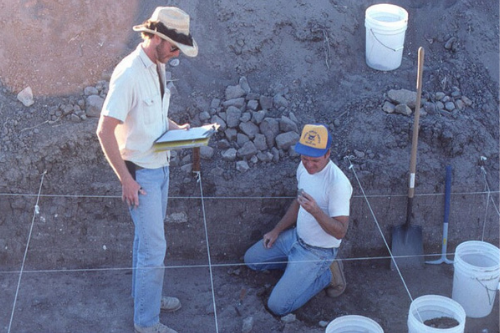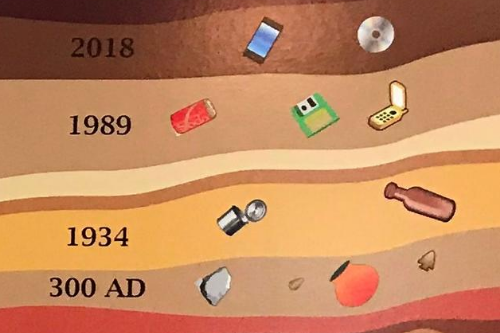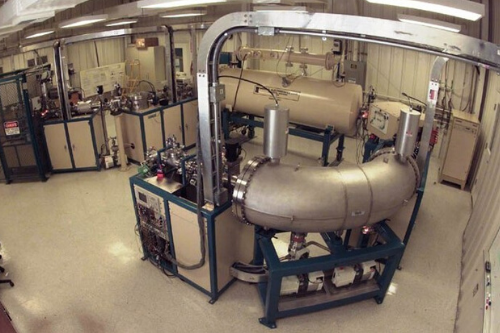
Dig Deeper: What Is Archaeology?
Dig Deeper is a monthly blog focusing on the basics of archaeology by taking a closer look at the exhibition Archaeology 101, which is currently featured at the Center.
What is Archaeology?
Archaeology is the study of human history, prehistory, and past cultures through the excavation of sites and the analysis of material remains. Archaeology is important. By studying and exploring the cultures that came before us, our understanding of the past becomes even more comprehensive.
What is an Artifact?
An artifact is an object that was made or used by a human. Additionally, archaeologists study ecofacts. An ecofact is any object that indicates human activity, like an animal bone that has signs of butchering, or a sea shell that was used for food.
What Do Archaeologists Study?
Artifacts and ecofacts become buried over time, and archaeologists must recover them carefully so that they can be identified and studied. By studying the remains of human history, archaeologists can recreate aspects from past cultures that tell us how and why people lived the way that they did. One artifact can indicate many details that increase our knowledge of the past. The location of the found artifact also may indicate details about the past that archaeologists can learn from. There are many pieces to the puzzle, but each is an important clue and may indicate gender, age, cultural and societal aspects, ethnicity, technology, and other qualities that will help increase our understanding of past cultures.
How Has Archaeology Changed?
Archaeology has gone through many changes in recent years. Excavating by hand is still done in the field, but with new technologies and advancements, archaeologists are able to use computers, satellites, drone technology, and software to dig deeper into the mysteries of time unlike ever before.
Types of Archaeology
There are many different types of archaeology. From environmental archaeology, which focuses on the environmental conditions of specific time periods, to marine or underwater archaeology where material remains found below sea level are uncovered and examined, there are many different specialties within and archaeologists may focus their careers on one or more of these areas. Additionally, archaeologists frequently work closely with scientists from other disciplines, such as geologists and botanists. By doing so, the information gathered during a project can be researched and developed by specialists in their field and this makes the newly uncovered knowledge stronger and tells a more complete story about the past.
Archaeological Sites in San Diego County
In San Diego County, there are more than 34,000 recorded prehistoric and historic archaeological sites. These sites cover a time span of approximately 10,000 years of past San Diego human history. San Diego County has been able to protect and preserve these sites because of important California and federal laws that help protect cultural resources.
Laws to Protect Archaeological Sites
- CEQA: The California Environmental Quality Act of 1970 requires developers to evaluate potential development sites for natural or cultural resources. If natural or cultural resources are discovered, the developer must avoid, cover, or excavate to preserve these places.
- ARPA: The Archaeological Resource Protection Act of 1979 governs the excavation of archaeological sites on federal and Indigenous lands in the United States and forbids the removal of collections from these sites.
Conclusion
Archaeology is the study of artifacts or material remains that were left behind by previous generations. But how do archaeologists know where to dig? How are stone tools made? Each week, this blog will dig deeper into this fascinating world of archaeology by explaining many of these basic principles that define archaeology as we know it today. Next month, we will explore the different types of tools that archaeologists use during excavations in the field and after, once they are brought into the lab.
By Jessica McPheters, Collections Manager
Learn More
Archaeology 101 Exhibit
Dr. Arty Fax’s Archy Facts




